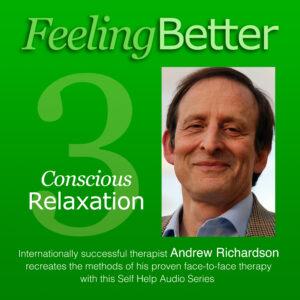Relaxation Techniques to Practice
Relaxation techniques play an important supporting part of recovery from high emotional stress.
Practising Relaxation
Being more relaxed is a part of all recoveries from mental and emotional difficulties. And though you will often need more than relaxation techniques on their own, the practice of relaxation will always be worthwhile and can be essential.
Note that these relaxation techniques are more effective if used before the arousal level goes too high. High arousal requires more effort to achieve a result. The secret is to practice these techniques when you are not feeling stressed or out of control.
The first step is to recognise a feeling when the resulting thoughts/actions may not be helpful if allowed to develop. The second step is to say ‘freeze’ to yourself, then choose an instant calming technique from breathing, distraction or exercise.
More Resources
Healing Audios
Information Sheets
Healing Stories
One More
One More
7/11 Breathing is the first relaxation technique to learn
- Sit down or lie down comfortably
- Concentrate on your breathing. You cannot be relaxed and worked up at the same time. The OUT breath stimulates the relaxation response in your body and brain, so ALWAYS start with an OUT breath. If you have been hyperventilating over something you may have to force yourself to do an OUT breath but it will work to stimulate the relaxation. When you breathe out, try and make it last as long as you can. Count slowly as you breath out. Try to count to 11.
- Breathe IN. Again count this breath and it needs to be shorter than the out breath. Most people, when they start can count to 8 on this breath.
- Repeat steps 2 and 3 as much as you like or feel you need to. If you do it long enough, when lying down, you should fall asleep. The aim is to reach the count of 11 on the Out breath and 7 on the IN breath but it’s not essential. What is essential is that the OUT breath is always longer than the IN breath.
Three Distraction Relaxation techniques
Twenty Second trick
Force emotional arousal down (generally a right brain hemisphere activity), by engaging in a left brain activity. For example, a mental activity such as listing things alphabetically, learning poetry, mental arithmetic, spelling backwards, reading backwards, translating into another language. This exercise can also include creative activities where mental sorting has to occur eg: playing/writing music, writing stories, painting, cooking, embroidery, gardening, craft work.
Progressive Muscle Relaxation
Lie down or make yourself comfortable. Starting with your feet, tense your muscles as tightly as you can. Hold for a count of 10, and then relax. Continue to d this for every muscle group in your body, working your way up from your feet to the top of your head.
Anchoring to Calm
Lie or sit down and find a way to calm yourself – perhaps by listening to music that touches you or even better by going to a place in your imagination that has happy memories. A garden perhaps, or by a river, or on a hilltop, or (a favourite this) on a beach or in a dappled wood (my favourite). The place can be imagined or come from a real experience such as a holiday.
And then stay with this until calm relaxing and happy feelings spread through you.
Then anchor this good feeling by rubbing the thumb and forefinger of your right hand together. This connection between two feelings will stay for you and so you can feel calmer whenever you choose – just rub your finger and thumb together.
Exercise is the most comprehensive relaxation technique
When exercising, the body releases ‘feel-good’ chemicals called endorphins. This generally occurs after 20-30 minutes of exercise that increases the heart rate. If you cannot get outside the home, be creative in thinking up something that can be done inside .e.g: Dancing, Exercise DVD or video, small trampoline, bike etc.
Lorem ipsum dolor sit amet, consectetur adipiscing elit. Ut elit tellus, luctus nec ullamcorper mattis, pulvinar dapibus leo.
Lorem ipsum dolor sit amet, consectetur adipiscing elit. Ut elit tellus, luctus nec ullamcorper mattis, pulvinar dapibus leo.
Lorem ipsum dolor sit amet, consectetur adipiscing elit. Ut elit tellus, luctus nec ullamcorper mattis, pulvinar dapibus leo.
Lorem ipsum dolor sit amet, consectetur adipiscing elit. Ut elit tellus, luctus nec ullamcorper mattis, pulvinar dapibus leo.






